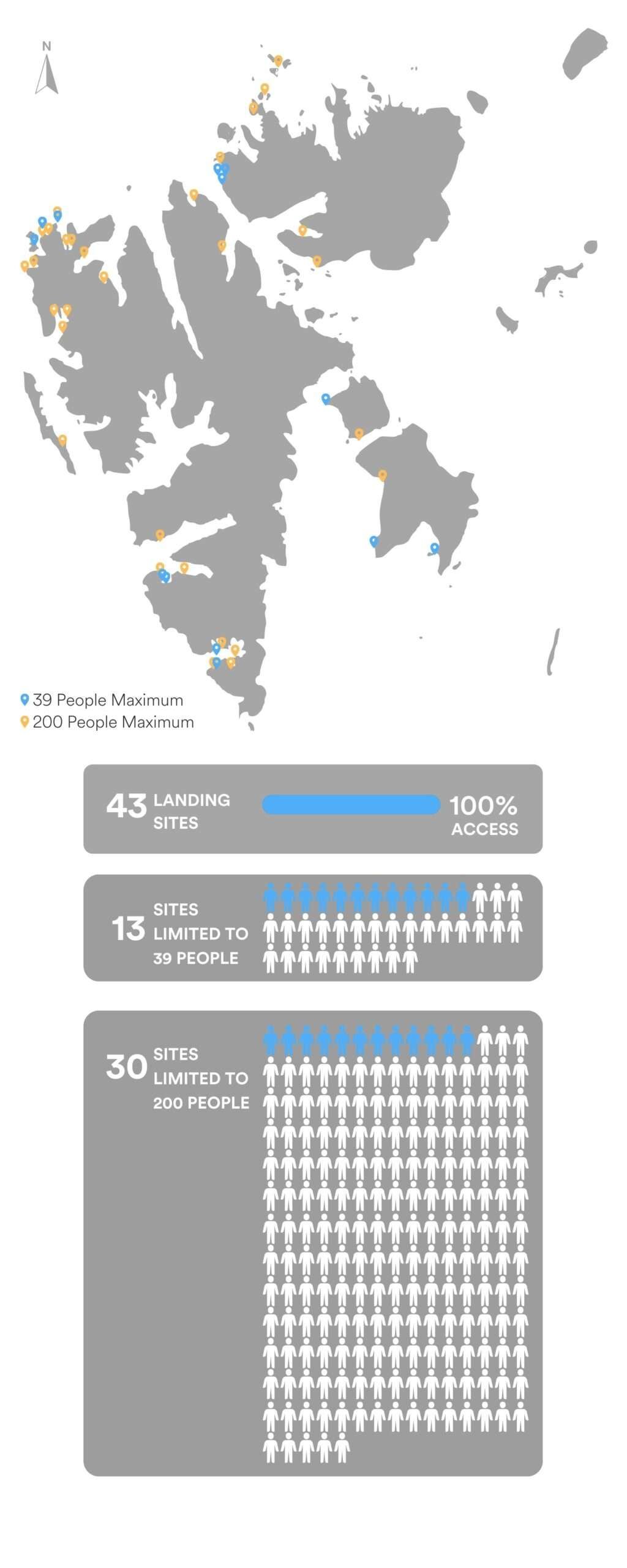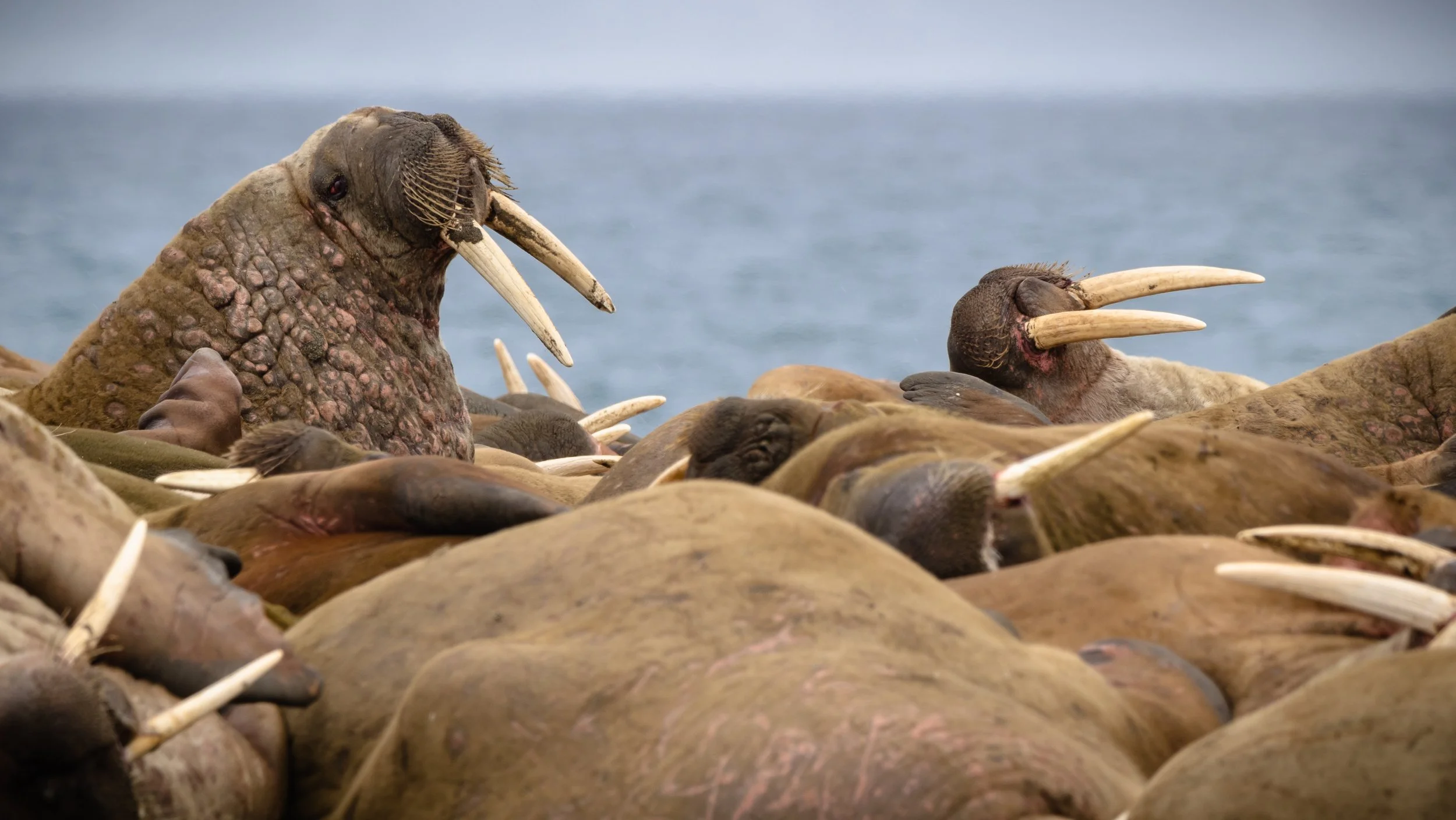SVALBARD REGULATION
The Norwegian government has will adopt from the 1st January 2025 stricter environmental regulations on Svalbard.
Our Expeditions cruises are built on conscious travel, and as these rules aim to protect the Arctic environment and its wildlife – naturally, FRAMTours welcomes steps towards protecting the wilderness.
We understand that you might have questions about Svalbard’s new regulations and how they may alter exploration in Svalbard. That considered, we’ve put together all the information you need, but you can always reach out to a member of our team if you have any questions.
New Svalbard Regulations
The new regulations, adopted by Parliament include:
Landings in protected areas will be prohibited, except for 43 designated landing sites.
Passenger limits of 200 will apply in all protected areas.
Drones are banned in all protected areas.
The use of snowmobiles and tracked vehicles is permanently banned on sea ice after 1 March in select fjords, with some exceptions for cabin access.
Motor traffic at sea must be kept at a maximum of 5 knots speed at a distance of 500 metres from land outside bird cliffs from 1 April to 31 August.
Motor traffic at sea must be kept at a maximum of 5 knots speed and must keep a minimum distance of 150 metres distance from walrus haulout sites.
Breaking fast ice will be forbidden, with exceptions for shipping routes to Longyearbyen, Barentsburg, Ny-Ålesund and the Coast Guard.
It’s prohibited to disturb, lure or pursue polar bears unnecessarily
Minimum distances from polar bears will be set at 300 meters between July 1st and 28th February
Minimum distances from polar bears will be set at 500 meters between March 1st and June 30th
Why Svalbard New Regulations Favour SMALL EXPEDITION CRUISE?
What do the limitations mean for you and your expedition?
The way we travel, the way we do business and the way we think is undergoing a significant evolution, and it’s a change for the better. The planet has been spinning for millions of years, and if you think about that, the diversity of life forms as well as the existence of humanity at this moment in time is nothing short of a miracle. We recognise this privilege.
With new regulations coming into play, action is necessary to change the way we operate. The most noteworthy is the reduction in landing sites will likely have the most noticeable impact on expedition cruises, as many popular spots are located within protected areas. However, we believe that these limitations are necessary to preserve Svalbard’s wilderness for future generations.
Our Svalbard expeditions focus on small groups, hosting just 12 guests which means we can access all 43 sites in Svalbard. All sites are limited to a maximum of 200 people and 13 of those are limited to a maximum of 39 people at a time.
Travelling in small groups not only reduces the strain on Svalbard’s ecosystem but also allows for more meaningful connections with nature and fellow explorers.
The reduction in landing sites will not diminish the quality of our expeditions because, as true explorers, we embrace the unpredictable nature of the Arctic and make the most of every opportunity. Rather than adhering to a strict itinerary, we observe nature as it unfolds, making the most of the opportunities we have within nature and always upholding respect wherever we visit. That will never change.
Drones USE
The rules and implications for drone usage have developed in Svalbard and are put in place to reduce the disturbance of wildlife. Those rules are quite strict and we are obliged to follow them. Unfortunately, expedition guests are not permitted to use drones during their expedition. Our expedition team members are allowed to flying drones, they are being used professionally and will adhere to the Svalbard regulations and AECO guidelines.
Wildlife Watching
Maintaining a respectful distance from wildlife has always been a priority, something having been strictly enforced by our guides. The new regulations focus on the peak summer months when bird cliffs serve as crucial breeding grounds and, in a general way, the wildlife is more active and could be easily spotted . It’s imperative not to disturb the delicate balance of nature. The opportunity to witness wildlife is still possible; it’s about maintaining a balance of respect between wild animals and ourselves.
We like to take things slow, adhering to a speed limit of 5 knots has been introduced, often opting to switch off our engines, allowing us to observe the wildlife quietly. Do you want to enjoy an unforgettable moment with a wild animal? Keep it slow. Breath. Enjoy and repeat.
Rush does not belong to the Arctic.
Polar Bears
Polar bears are beloved creatures of the Arctic, and the International Union for Conservation of Nature has listed them as a vulnerable species. Whilst they may sit at the top of the food chain, they suffer many challenges today due to climate change, which crucially impact their hunting and survival methods. Research and regular monitoring are fundamental in helping protect these magnificent creatures, which is why it’s been agreed to enforce stricter regulations for polar bears and marine areas.
What are the new polar bear regulations in Svalbard?
Prohibitions: It is prohibited to disturb, lure, or pursue polar bears unnecessarily. This is a rule that should be valid not only for polar bears, but as a general rule for any type of wildlife all over the world.
July 1st to February 28th: Minimum distance from polar bears will be set at 300 meters.
March 1st to June 30th: Minimum distance from polar bears will be set at 500 meters.
There’s nothing quite like witnessing a polar bear in the wild, and while additional regulations have been put in place, they do not diminish the experience.
Respectful Wildlife Viewing
‘It is prohibited to disturb, lure, or pursue polar bears unnecessarily.’ – Nothing will change here!
On our Expedition Micro cruises, we work with the most experienced guides who are passionate about the Arctic, and we’re happy to reiterate our ethos: to leave the places and wildlife we see undisturbed. Our commitment to ethical wildlife viewing ensures that you can observe these magnificent creatures in a way without any disturbance.
If you’re a photographer, we know that capturing a shot of a polar bear is likely on your list. While we maintain a safe distance from the bears, we emphasize the beauty of landscape photography.
Capturing animals within their natural landscapes not only tells a more compelling story but also highlights the stunning environment that these creatures call home. This approach enriches your photographic portfolio with meaningful and impactful images.
Walruses colony in Poolepynten, Svalbard. Canon EOS R3 - RF 600mm f/4 L IS USM




